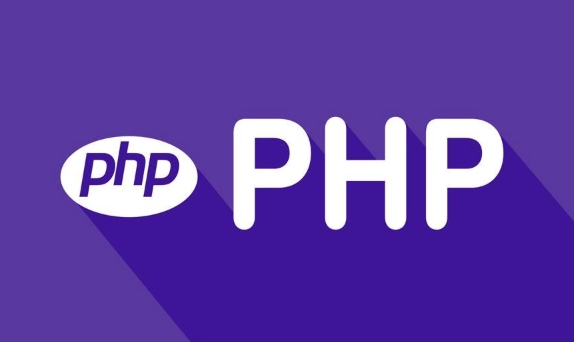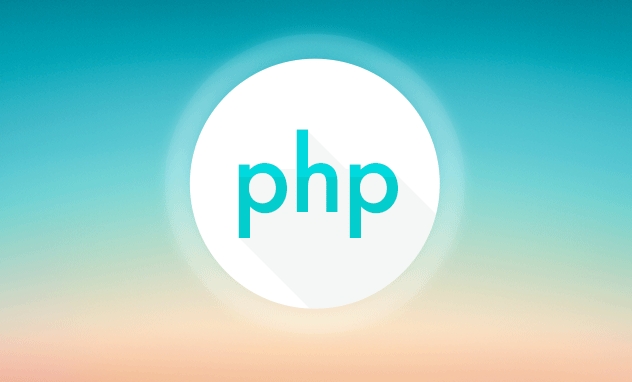 Backend Development
Backend Development
 PHP Tutorial
PHP Tutorial
 From installation to operation: A complete guide to PHP development environments
From installation to operation: A complete guide to PHP development environments
From installation to operation: A complete guide to PHP development environments
Jun 29, 2025 am 01:39 AMTo set up a PHP development environment, choose a stack like XAMPP for simplicity or Docker for consistency, install PHP and configure php.ini, set up a local server with virtual hosts, and include essential tools like Xdebug, Composer, and Git. Begin by selecting a development stack: XAMPP is beginner-friendly, Docker ensures environment consistency, and manual setup offers advanced control. Install PHP via package managers or bundled stacks, verify installation with php -v, and configure display_errors, upload sizes, and required extensions in php.ini. Use Apache from XAMPP or MAMP to serve files from htdocs or set up virtual hosts for cleaner URLs by editing httpd-vhosts.conf and the hosts file. For debugging and tooling, implement Xdebug for tracing and breakpoints, PHPStan or Psalm for static analysis, Composer for dependency management, and Git for version control. Once configured, this environment supports building robust PHP applications efficiently.

Setting up a PHP development environment might sound technical, but once you get the flow, it becomes second nature. Whether you're building a simple script or a full-scale web app, having the right tools and setup makes all the difference.

Choosing Your Development Stack
The first thing you'll want to decide is which stack you're going with. Most PHP developers go for LAMP (Linux, Apache, MySQL, PHP) or WAMP/XAMPP on Windows. If you're on macOS, MAMP is another solid option.

- WAMP/XAMPP gives you everything pre-packaged — server, database, PHP — all in one install
- Docker setups are becoming more popular for consistency across environments
- For advanced users, manually installing Apache/NGINX, PHP, and MySQL offers the most control
Each has pros and cons. Beginners usually find XAMPP easier to start with because of how straightforward the installation is. Meanwhile, Docker helps avoid "it works on my machine" issues later down the line.
Installing PHP and Setting Up the Basics
Once your stack is chosen, it’s time to install PHP. On Linux systems, you can use package managers like apt or yum. On Windows, using XAMPP will handle this for you automatically.

After installation, check that PHP is working by running:
php -v
If you see a version number instead of an error, you're good to go. But don’t stop there — make sure to configure php.ini properly. This file controls things like error reporting, upload sizes, and extensions.
Common settings to tweak:
-
display_errors = On(great for development) -
upload_max_filesizeandpost_max_sizeif you’re dealing with file uploads - Enable extensions like
mysqli,curl, andmbstringdepending on your project needs
Also, remember to restart your server after making changes to php.ini.
Setting Up a Local Server and Testing Environment
Now that PHP is installed, you need somewhere to run your code. XAMPP or MAMP typically installs Apache, so you can drop your PHP files into the htdocs folder and access them via http://localhost.
For better organization, consider virtual hosts. That way, instead of typing http://localhost/myproject, you can set up something like http://myproject.local.
Here's how:
- Edit the Apache
httpd-vhosts.conffile - Add a new
<virtualhost></virtualhost>block pointing to your project directory - Update your system’s
hostsfile to point the domain to 127.0.0.1 - Restart Apache
This setup mimics a real-world domain structure and helps when managing multiple projects.
Debugging and Tools You Should Know
No PHP dev environment is complete without some debugging tools. At minimum, you should be logging errors and viewing them — either through the browser or the Apache error log.
Useful tools:
- Xdebug – Adds stack traces, breakpoints, and profiling
- PHPStan or Psalm – Static analysis tools for catching bugs early
- Composer – Essential for dependency management and autoloading
And don’t forget about version control. Always keep your code in Git, even locally. It helps track changes and collaborate better later on.
That's basically it. Once you've got these pieces in place — a solid stack, working PHP install, configured local server, and basic tooling — you’re ready to build just about anything. The key is not to overcomplicate it at first. Get it running, then improve as needed.
The above is the detailed content of From installation to operation: A complete guide to PHP development environments. For more information, please follow other related articles on the PHP Chinese website!

Hot AI Tools

Undress AI Tool
Undress images for free

Undresser.AI Undress
AI-powered app for creating realistic nude photos

AI Clothes Remover
Online AI tool for removing clothes from photos.

Clothoff.io
AI clothes remover

Video Face Swap
Swap faces in any video effortlessly with our completely free AI face swap tool!

Hot Article

Hot Tools

Notepad++7.3.1
Easy-to-use and free code editor

SublimeText3 Chinese version
Chinese version, very easy to use

Zend Studio 13.0.1
Powerful PHP integrated development environment

Dreamweaver CS6
Visual web development tools

SublimeText3 Mac version
God-level code editing software (SublimeText3)
 PHP Variable Scope Explained
Jul 17, 2025 am 04:16 AM
PHP Variable Scope Explained
Jul 17, 2025 am 04:16 AM
Common problems and solutions for PHP variable scope include: 1. The global variable cannot be accessed within the function, and it needs to be passed in using the global keyword or parameter; 2. The static variable is declared with static, and it is only initialized once and the value is maintained between multiple calls; 3. Hyperglobal variables such as $_GET and $_POST can be used directly in any scope, but you need to pay attention to safe filtering; 4. Anonymous functions need to introduce parent scope variables through the use keyword, and when modifying external variables, you need to pass a reference. Mastering these rules can help avoid errors and improve code stability.
 How to handle File Uploads securely in PHP?
Jul 08, 2025 am 02:37 AM
How to handle File Uploads securely in PHP?
Jul 08, 2025 am 02:37 AM
To safely handle PHP file uploads, you need to verify the source and type, control the file name and path, set server restrictions, and process media files twice. 1. Verify the upload source to prevent CSRF through token and detect the real MIME type through finfo_file using whitelist control; 2. Rename the file to a random string and determine the extension to store it in a non-Web directory according to the detection type; 3. PHP configuration limits the upload size and temporary directory Nginx/Apache prohibits access to the upload directory; 4. The GD library resaves the pictures to clear potential malicious data.
 Commenting Out Code in PHP
Jul 18, 2025 am 04:57 AM
Commenting Out Code in PHP
Jul 18, 2025 am 04:57 AM
There are three common methods for PHP comment code: 1. Use // or # to block one line of code, and it is recommended to use //; 2. Use /.../ to wrap code blocks with multiple lines, which cannot be nested but can be crossed; 3. Combination skills comments such as using /if(){}/ to control logic blocks, or to improve efficiency with editor shortcut keys, you should pay attention to closing symbols and avoid nesting when using them.
 How Do Generators Work in PHP?
Jul 11, 2025 am 03:12 AM
How Do Generators Work in PHP?
Jul 11, 2025 am 03:12 AM
AgeneratorinPHPisamemory-efficientwaytoiterateoverlargedatasetsbyyieldingvaluesoneatatimeinsteadofreturningthemallatonce.1.Generatorsusetheyieldkeywordtoproducevaluesondemand,reducingmemoryusage.2.Theyareusefulforhandlingbigloops,readinglargefiles,or
 Tips for Writing PHP Comments
Jul 18, 2025 am 04:51 AM
Tips for Writing PHP Comments
Jul 18, 2025 am 04:51 AM
The key to writing PHP comments is to clarify the purpose and specifications. Comments should explain "why" rather than "what was done", avoiding redundancy or too simplicity. 1. Use a unified format, such as docblock (/*/) for class and method descriptions to improve readability and tool compatibility; 2. Emphasize the reasons behind the logic, such as why JS jumps need to be output manually; 3. Add an overview description before complex code, describe the process in steps, and help understand the overall idea; 4. Use TODO and FIXME rationally to mark to-do items and problems to facilitate subsequent tracking and collaboration. Good annotations can reduce communication costs and improve code maintenance efficiency.
 Learning PHP: A Beginner's Guide
Jul 18, 2025 am 04:54 AM
Learning PHP: A Beginner's Guide
Jul 18, 2025 am 04:54 AM
TolearnPHPeffectively,startbysettingupalocalserverenvironmentusingtoolslikeXAMPPandacodeeditorlikeVSCode.1)InstallXAMPPforApache,MySQL,andPHP.2)Useacodeeditorforsyntaxsupport.3)TestyoursetupwithasimplePHPfile.Next,learnPHPbasicsincludingvariables,ech
 How to access a character in a string by index in PHP
Jul 12, 2025 am 03:15 AM
How to access a character in a string by index in PHP
Jul 12, 2025 am 03:15 AM
In PHP, you can use square brackets or curly braces to obtain string specific index characters, but square brackets are recommended; the index starts from 0, and the access outside the range returns a null value and cannot be assigned a value; mb_substr is required to handle multi-byte characters. For example: $str="hello";echo$str[0]; output h; and Chinese characters such as mb_substr($str,1,1) need to obtain the correct result; in actual applications, the length of the string should be checked before looping, dynamic strings need to be verified for validity, and multilingual projects recommend using multi-byte security functions uniformly.
 Quick PHP Installation Tutorial
Jul 18, 2025 am 04:52 AM
Quick PHP Installation Tutorial
Jul 18, 2025 am 04:52 AM
ToinstallPHPquickly,useXAMPPonWindowsorHomebrewonmacOS.1.OnWindows,downloadandinstallXAMPP,selectcomponents,startApache,andplacefilesinhtdocs.2.Alternatively,manuallyinstallPHPfromphp.netandsetupaserverlikeApache.3.OnmacOS,installHomebrew,thenrun'bre





